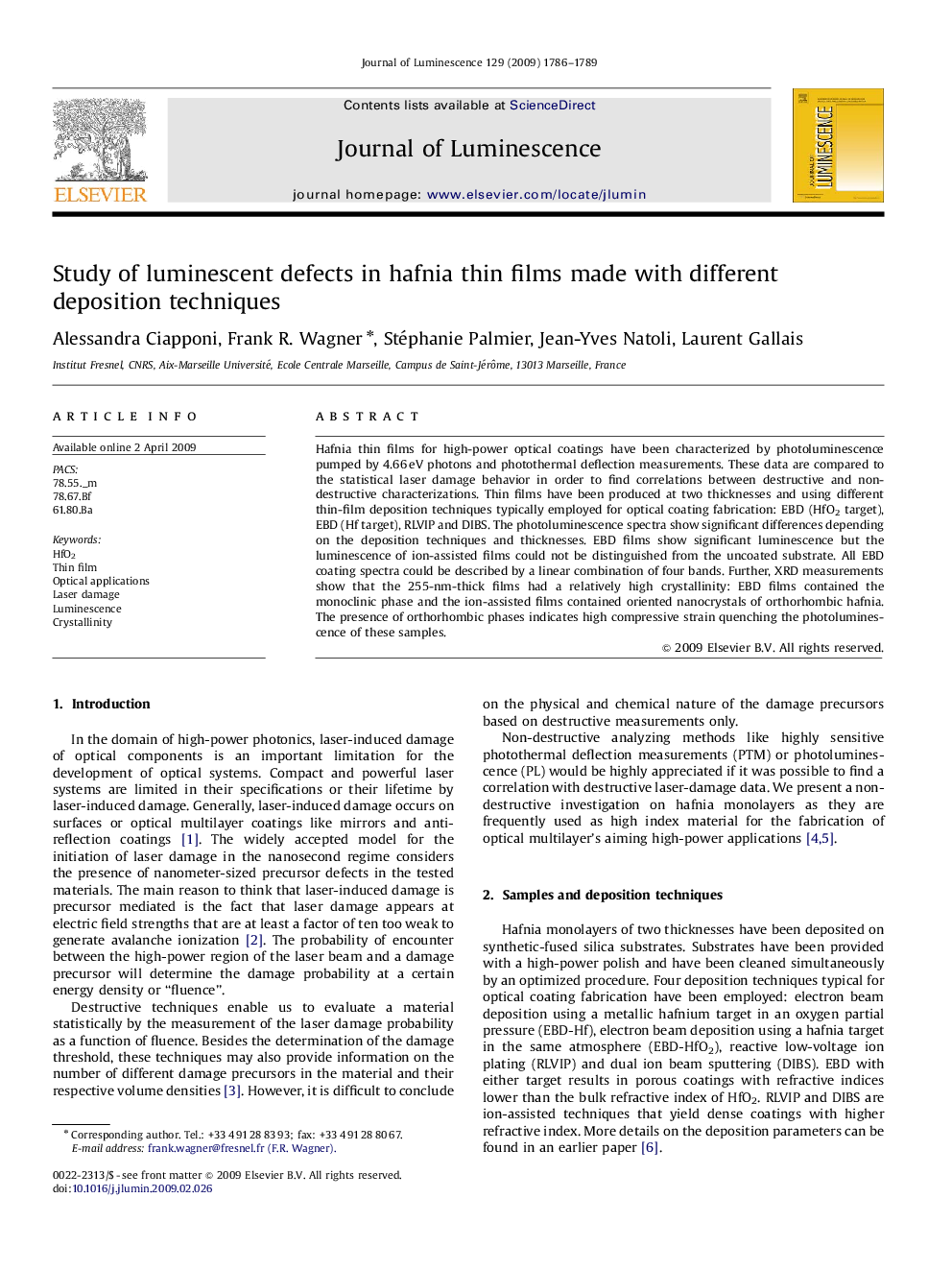| Article ID | Journal | Published Year | Pages | File Type |
|---|---|---|---|---|
| 5402716 | Journal of Luminescence | 2009 | 4 Pages |
Abstract
Hafnia thin films for high-power optical coatings have been characterized by photoluminescence pumped by 4.66Â eV photons and photothermal deflection measurements. These data are compared to the statistical laser damage behavior in order to find correlations between destructive and non-destructive characterizations. Thin films have been produced at two thicknesses and using different thin-film deposition techniques typically employed for optical coating fabrication: EBD (HfO2 target), EBD (Hf target), RLVIP and DIBS. The photoluminescence spectra show significant differences depending on the deposition techniques and thicknesses. EBD films show significant luminescence but the luminescence of ion-assisted films could not be distinguished from the uncoated substrate. All EBD coating spectra could be described by a linear combination of four bands. Further, XRD measurements show that the 255-nm-thick films had a relatively high crystallinity: EBD films contained the monoclinic phase and the ion-assisted films contained oriented nanocrystals of orthorhombic hafnia. The presence of orthorhombic phases indicates high compressive strain quenching the photoluminescence of these samples.
Related Topics
Physical Sciences and Engineering
Chemistry
Physical and Theoretical Chemistry
Authors
Alessandra Ciapponi, Frank R. Wagner, Stéphanie Palmier, Jean-Yves Natoli, Laurent Gallais,
